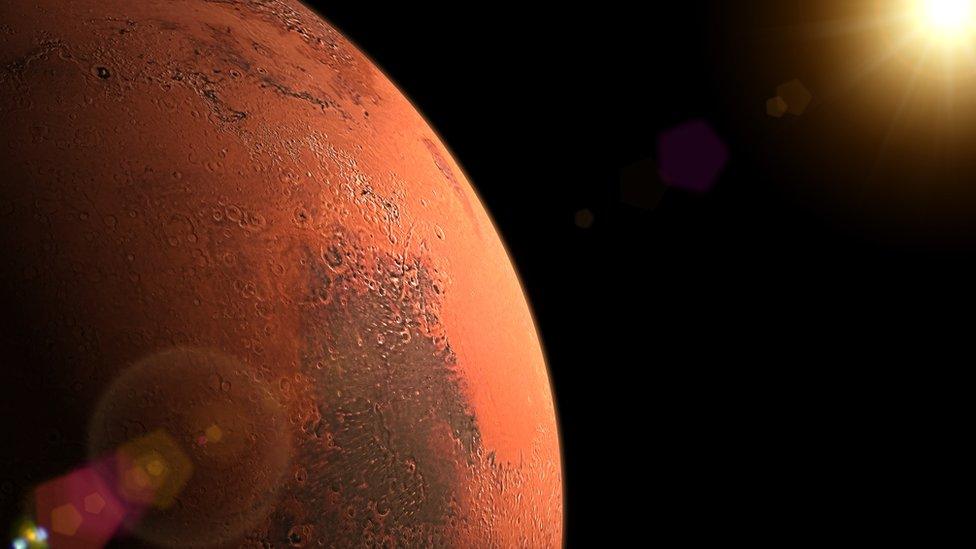Space: Three salty lakes discovered on Mars
- Published
- comments

Three underground lakes have been discovered under Mars' icy south polar cap.
The Red Plant has a thin atmosphere and a climate that has become colder over billions of years,
Mars' temperature means it is almost impossible for water to exist on its surface, but scientists say water could be in liquid form below ground.
This discovery might reveal if organisms could live on Mars, or other planets in our solar system.
But, the lakes are believed to be extremely salty, which could make it difficult for any microbial life to survive in them.
The findings come from data collected by Esa's Mars Express spacecraft
These lakes were uncovered using data from a radar instrument on the European Space Agency's (ESA) Mars Express spacecraft, which has been orbiting the Red Planet since December 2003.
The spacecraft has also helped scientists confirm that a fourth lake exists., as suggested in 2018.
The main lake (centre) is surrounded by at least three smaller lakes
Could humans live on Mars?
It is not the first time that researchers have been excited about water on our neighbouring planet.
Previous studies found possible signs that water could have once been on Mars' surface - flowing rivers and lakes are thought to have existed around 3.7 billion years ago.
The liquid water was discovered under the south polar cap of Mars
This discovery was made using a radar sounder technique, originally designed to investigate lakes in Antarctica, Canada and Greenland, below glaciers.
Elena Pettinelli from Roma Tre University in Italy, said: "Not only did we confirm the position, extent and strength of the reflector from our 2018 study, but we found three new bright areas".
"The main lake is surrounded by smaller bodies of liquid water, but because of the technical characteristics of the radar, and of its distance from the Martian surface, we cannot conclusively determine whether they are interconnected." She added.
"The interpretation that best reconciles all the available evidence is that the high intensity reflections (from Mars) are coming from extended pools of liquid water," said Sebastian Lauro, also from Roma Tre University.
If you cannot see the quiz, click here.
- Published7 March 2018
- Published1 May 2020
- Published4 October 2019
